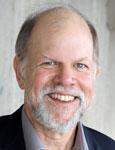Around the Baltic Sea in Sweden there are dozens of abandoned Viking settlements. The odd thing about these sites is that they lay a few kilometers inland. The Vikings were seafaring people, and the settlements have the remains of large sea-going ships.
Anders Celsius, a polymath who invented the temperature scale that bears his name, was curious about the old Viking settlements. He proposed that sea level was falling. Celsius went to the shore and carved lines and dates on rocks at the waterline. He persuaded other scientists to do the same thing at different locations around Scandinavia during the early 1700s. This turned out to be the first long-term network for scientific observation.

Sure enough, over the years it became obvious that the carved lines were rising above the water, or vice-versa. Even now, 300 years after Celsius worked, you can find his lines on rocks around the Baltic Sea. Now the lines are about six to twelve feet above sea level.
Why were the carved lines separating from the water surface? Celsius thought that sea level was falling. He died before the matter was resolved.
By a few decades after Celsius’ death in 1744, it was obvious that the distance between the sea surface and the carved lines varied from place to place. If the sea were falling, the gap would be the same everywhere. Therefore the sea was not falling. The land must be rising!
By 1865, scientists knew that massive glaciers once covered the northern hemisphere. They reasoned that the melting of the glaciers removed a great weight from the land, allowing the land to rebound. By about 1890 this idea was generally accepted, and it remains so today.
Two centuries after Celsius asked the question, scientists confirmed their understanding of why the Viking ships were so far away from the seashore. The rebound of Earth’s surface from the weight of the glaciers has gone on for 10-15 thousand years and is still happening today at a rate of a few millimeters per year.
Slow changes, like melting glaciers and terrestrial rebound, create legacies. By dictionary definition, a legacy is property or money left to someone in a will. But we also create legacies on our planet.
Anders Celsius might be surprised to know that sea level is now rising. Higher sea level will become one of our most important legacies. Sea level is rising because global warming is melting glaciers, adding their water to the sea. The warming of the atmosphere is also warming the oceans. When water warms up it expands. This expansion also adds to sea level rise.
Sea level rise may become the most striking relic of our society. We are committed to sea level rise; it will occur even if greenhouse gas emissions are capped. The rise will be about 2 to 5 feet by 2100. By 2400 sea level could be 30 to 60 feet higher than now. It could submerge hundreds of cities and displace millions of people. It will last thousands of years, at least twice as long as civilization has existed so far. Anders Celsius’ lines on the rocks could be far underwater for a long time.

We are writing our own legacy on the soils, waters, plants and animals of Wisconsin. We are losing plants and animals that have been here since the Ice Age, while gaining new, invasive Eurasian plants and animals that are here to stay. We are depleting and poisoning groundwater that will take decades or more to replenish. We have built a stockpile of soil phosphorus that will pollute our lakes and rivers for at least 200 years, longer than Wisconsin has been a state. We are losing forever the traditional ecological knowledge built over thousands of years by the hard experience of native people adapting to fluctuating environments.
But the legacies we leave do not need to be entirely bad. To create good legacies, we must learn to Respect the Slow. This might be the most fundamental challenge to humanity.
We are accustomed to instant communication, rapid air travel anywhere on earth, and other conveniences. But we must remember the slow pace of the planet that supports us and creates our only real wealth. Its rates of change are hard for us to imagine or understand, especially given the fast pace of modern life.
Science can quantify and catalog earth’s long-term losses. But science by itself does not inspire long-term thinking or evoke action to improve our long-term prospects.
Perhaps art and stories are needed to stir awe and shock at the magnitude and duration of today’s environmental changes, as well as to help us understand our place in the world and our responsibilities to each other, our planet, and our future. That itself is a hypothesis, subject to test by Yahara 2070 and other experiments in long-term thinking that bring together science, art, and storytelling. Time will tell.
This essay is taken and modified from Steve Carpenter’s acceptance speech for his Wisconsin Academy Fellowship, which he gave on April 17, 2016. This version originally appeared on the Yahara in Situ Blog on May 4, 2016.




